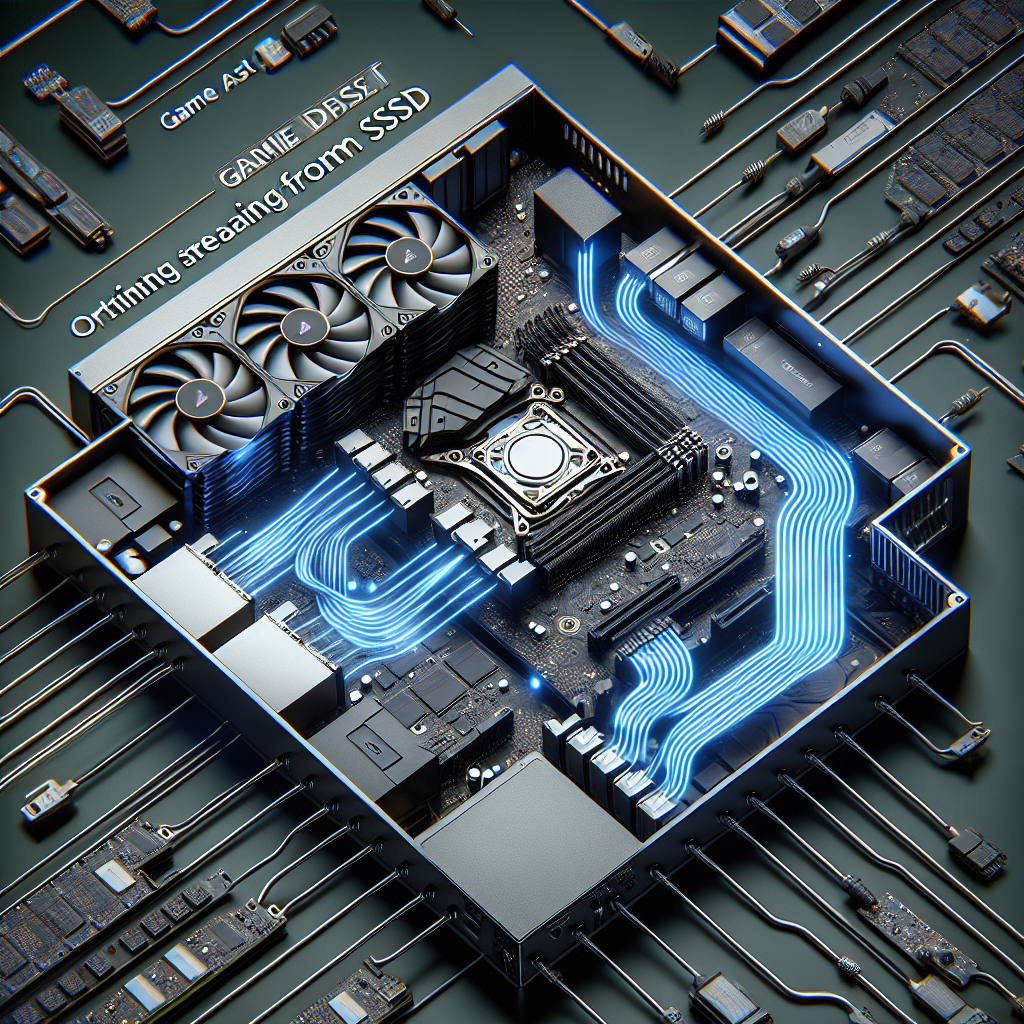In the rapidly advancing landscape of gaming technology, one factor that significantly enhances the gameplay experience is the optimization of game asset streaming from Solid State Drives (SSDs). Gaming PCs have increasingly adopted SSDs over traditional Hard Disk Drives (HDDs) due to their superior speed, reliability, and efficiency. This article delves into the mechanisms, benefits, and methods through which gaming PCs optimize game asset streaming from SSDs.
The Importance of SSDs in Gaming
SSDs offer numerous advantages over HDDs, particularly in gaming. Here’s a quick comparison:
| Feature | SSD | HDD |
|---|---|---|
| Speed | Faster (up to 3500 MB/s) | Slower (up to 150 MB/s) |
| Reliability | Higher (no moving parts) | Lower (mechanical moving parts) |
| Power Consumption | Lower | Higher |
| Noise | Silent | Audible |
Understanding Game Asset Streaming
Game asset streaming involves loading necessary game data (textures, models, sounds, etc.) into memory from the storage device as needed. Efficient asset streaming ensures smooth gameplay with minimal loading times and seamless transitions between game environments.
How SSDs Enhance Asset Streaming
- Reduced Load Times: SSDs dramatically decrease the load times of game assets compared to HDDs.
- Higher Data Transfer Rates: With faster read/write speeds, SSDs can quickly retrieve and stream game data.
- Enhanced Reliability: Due to the absence of moving parts, SSDs are less prone to mechanical failure, ensuring consistent performance.
Optimization Techniques for Asset Streaming
1. Parallel Loading
Using parallel loading, gaming PCs can load multiple assets simultaneously. This technique leverages the high-speed capabilities of SSDs to ensure that different components of the game environment are ready without causing delays.
2. Level of Detail (LOD)
Games often use different levels of detail (LOD) for models and textures based on the player’s distance from the object. By streaming lower-quality assets initially and higher-quality ones as needed, SSDs help optimize performance without sacrificing visual fidelity.
3. Compression Techniques
Advanced compression algorithms allow game developers to reduce asset size, enabling faster loading and streaming. SSDs can efficiently decompress these assets in real-time, further enhancing performance.
4. Caching Strategies
Caching frequently accessed game assets in a faster-access area of the SSD can significantly improve loading times. This involves storing cached assets close to the game engine’s memory management system for quick retrieval.
5. DirectStorage API
Microsoft’s DirectStorage API allows gaming PCs to take full advantage of NVMe SSDs by reducing the CPU overhead associated with asset streaming. DirectStorage enables more efficient management of input/output (I/O) operations, leading to faster game loading and smoother gameplay.
Future Trends in Game Asset Streaming
1. NVMe SSDs
NVM Express (NVMe) SSDs are becoming more prevalent due to higher data transfer rates, significantly improving asset streaming speeds. These SSDs are capable of reaching speeds up to 7000 MB/s, far surpassing traditional SATA SSDs.
2. AI and Machine Learning
Artificial Intelligence (AI) and Machine Learning (ML) are being leveraged to predict player behavior and pre-load relevant assets. This predictive loading strategy can ensure that necessary data is ready before the game demands it, minimizing latency.
3. Edge Computing
Edge computing involves moving processing closer to the data source. For gaming PCs, this means utilizing local computation power to manage asset streaming more effectively, reducing the reliance on distant data centers and improving real-time data access.
4. Cloud Gaming
With the rise of cloud gaming services, such as Google Stadia and NVIDIA GeForce Now, asset streaming methodologies are improving to handle remote streaming efficiently. SSDs play a crucial role in server-side data retrieval, enhancing the overall experience for gamers accessing these platforms.
Conclusion
Optimizing game asset streaming from SSDs is a multifaceted approach that involves leveraging advanced hardware capabilities and software techniques. By understanding and implementing these optimization strategies, gaming PCs can offer a smoother, more immersive, and visually stunning gaming experience. As technology continues to evolve, the integration of newer SSDs, AI-driven algorithms, and edge computing will further enhance the efficiency of asset streaming, making high-performance gaming more accessible to a broader audience.

